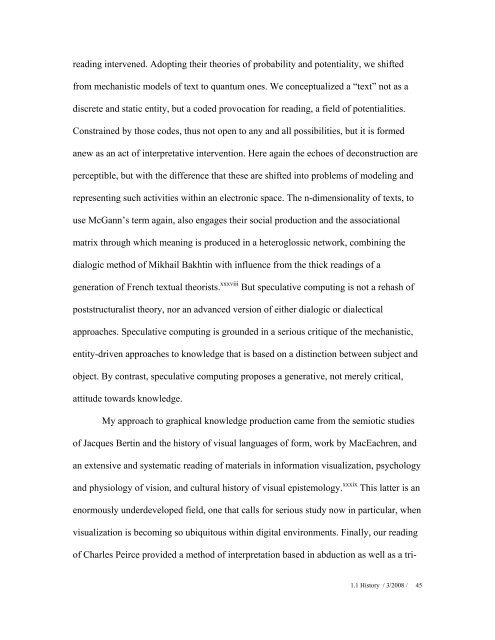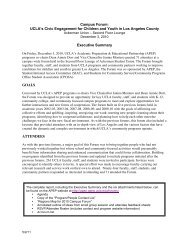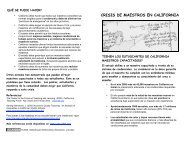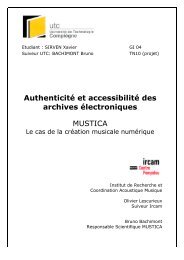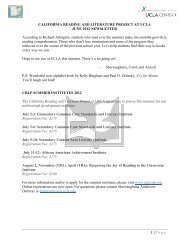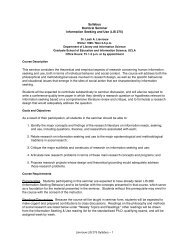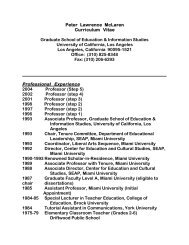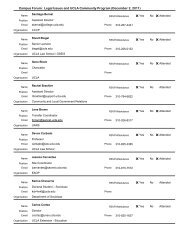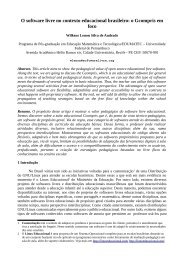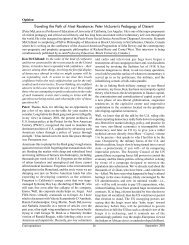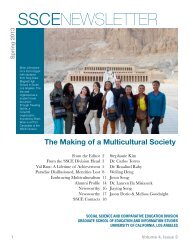1.1 From Digital Humanities to Speculative Computing - UCLA ...
1.1 From Digital Humanities to Speculative Computing - UCLA ...
1.1 From Digital Humanities to Speculative Computing - UCLA ...
Create successful ePaper yourself
Turn your PDF publications into a flip-book with our unique Google optimized e-Paper software.
eading intervened. Adopting their theories of probability and potentiality, we shifted<br />
from mechanistic models of text <strong>to</strong> quantum ones. We conceptualized a “text” not as a<br />
discrete and static entity, but a coded provocation for reading, a field of potentialities.<br />
Constrained by those codes, thus not open <strong>to</strong> any and all possibilities, but it is formed<br />
anew as an act of interpretative intervention. Here again the echoes of deconstruction are<br />
perceptible, but with the difference that these are shifted in<strong>to</strong> problems of modeling and<br />
representing such activities within an electronic space. The n-dimensionality of texts, <strong>to</strong><br />
use McGann’s term again, also engages their social production and the associational<br />
matrix through which meaning is produced in a heteroglossic network, combining the<br />
dialogic method of Mikhail Bakhtin with influence from the thick readings of a<br />
generation of French textual theorists. xxxviii But speculative computing is not a rehash of<br />
poststructuralist theory, nor an advanced version of either dialogic or dialectical<br />
approaches. <strong>Speculative</strong> computing is grounded in a serious critique of the mechanistic,<br />
entity-driven approaches <strong>to</strong> knowledge that is based on a distinction between subject and<br />
object. By contrast, speculative computing proposes a generative, not merely critical,<br />
attitude <strong>to</strong>wards knowledge.<br />
My approach <strong>to</strong> graphical knowledge production came from the semiotic studies<br />
of Jacques Bertin and the his<strong>to</strong>ry of visual languages of form, work by MacEachren, and<br />
an extensive and systematic reading of materials in information visualization, psychology<br />
and physiology of vision, and cultural his<strong>to</strong>ry of visual epistemology. xxxix This latter is an<br />
enormously underdeveloped field, one that calls for serious study now in particular, when<br />
visualization is becoming so ubiqui<strong>to</strong>us within digital environments. Finally, our reading<br />
of Charles Peirce provided a method of interpretation based in abduction as well as a tri-<br />
<strong>1.1</strong> His<strong>to</strong>ry / 3/2008 /<br />
45


